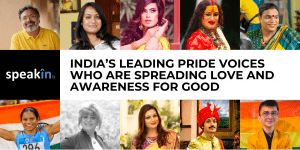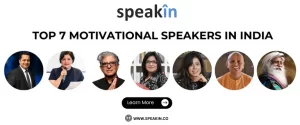Social Inclusion in India: How Every Inclusion Creates an Exclusion
The 21st Century has been teeming with discourse of how society excludes certain category of people from the mainstream of society and how these excluded populations have to live on the fringes of society without access to development and the fruits that it generates. This call for inclusion based societies has been global. In India too, the call for inclusion or inclusiveness as it is called by some has found a place not just among the members of the academia and activists but also among those who belong to the excluded communities notably from among the LGBT community.
The issue of exclusion of LGBT communities is usually the subject of interest to the urban based populations and very little of it actually means anything to the rural folk. In India exclusion from the mainstream involves many different strokes for many different folks. The University Grants Commission of India sanctioned the setting up of Centres in select universities to study the process of social exclusion. These Centres came to be called the Centre for the Study of Social Exclusion and Inclusive Policy. The wording not only sounds inelegant but also garbled which became difficult to understand what exactly these centres’ mandate was. With time it became clear that these Centres became de jure and de facto Centres for Dalit Studies.
Therefore the output of research in the various Centres for the Study of Exclusion and Inclusive Policy only has created a rhetoric against the Caste System and exclusion of Scheduled Castes from the upper echelons of the Hindu society. While some forms of research have brought out newer dimensions most others only reiterate the same story again and again. What is very surprising is that research on Tribal populations in this Centres (not situated in the North-Eastern region of India) has almost ritually given the question of inclusion of scheduled tribes in the mainstream of life, the blind eye treatment. Apart from that, the various activists who work for the interests of the scheduled tribes seem to believe that the best way to deal with them is to make them continue in their present existence in remote forests, arguing that bringing them into the mainstream society would disadvantage them tremendously because of their lack of familiarity with the complexities of modern life which would perhaps add them to the already burgeoning numbers of labourers who have been dispossessed of small land holdings that were originally theirs.
One could debate on the morality of leaving the tribal people as they are. Those who support their existence in the forests argue that they are most comfortable leading a form of life which they have led for centuries so for them the so called goods of modern society are not of any consequence. Others argue just because they are used living in a certain way does not mean we can leave them there open to the diseases that can be cured if they are brought into civilization and also let them enjoy the goods that come with living a civilized life. However irrespective of the presence or absence of merit in the “leave tribal people alone” argument one has to take into consideration the fact that the growing population of the country has been putting pressure on the forest cover of the country since more people require more land to live on and cultivate. So the pressure is on the tribal people. In this scenario, it is imperative to initiate the forest dwellers into the mores of modern civilization and equip them with the necessary skills to not just survive but thrive in the modern society. This has to be done by imparting education and that would facilitate their being drawn into the mainstream society. This has been done in the North-Eastern part of the country where every single person can speak and study in English. But, tribal populations that inhabit Chhattisgarh, Telangana, Andhra Pradesh and Odisha have become dispossessed of forests they had control over and have been drawn into the mainstream society as labourers.
Another category that needs to be examined is OBC. OBC is a misnomer because it stands for Other Backward Classes. The problem here is that when you have called them other backward classes implicit is the notion that there are backward classes which are already identified and it is apart from these already identified backward classes that you are looking at the other backward classes. However, in India, there has been no identification of backward classes and it should be remembered that class is an economic variable.
However, the notion of other Backward Classes does not invoke the economic position of these groups at all. It invokes castes. The only way in which these groups should be addressed is backward castes and not backward classes. To make the things murkier, dominant social castes like the Vokkaligas and the Lingayats in Karnataka, the Yadavs and Khurmis in Uttar Pradesh and Bihar and the Yadavs and Gouds in Telangana get classified as OBCs. They corner all the benefits of reservation.
In effect, when words like progress and development are used they are used only in the context of the scheduled castes because that is vote bank politics at work. The LGBT question is raised because it is a safe bet for the urban upper caste to appear progressive and at the same time escape the criticism of being upper caste. In all this the tribal populations of the country (except in the North-Eastern parts of the country) remain anonymous, undeveloped, backward and out of everyone’s consciousness. This means that while we talk of inclusion, we do so selectively and every inclusion creates other exclusions in Indian society. At this rate, the goal of inclusiveness of all cannot be reached. Exclusions will remain and these exclusions will be ignored.





